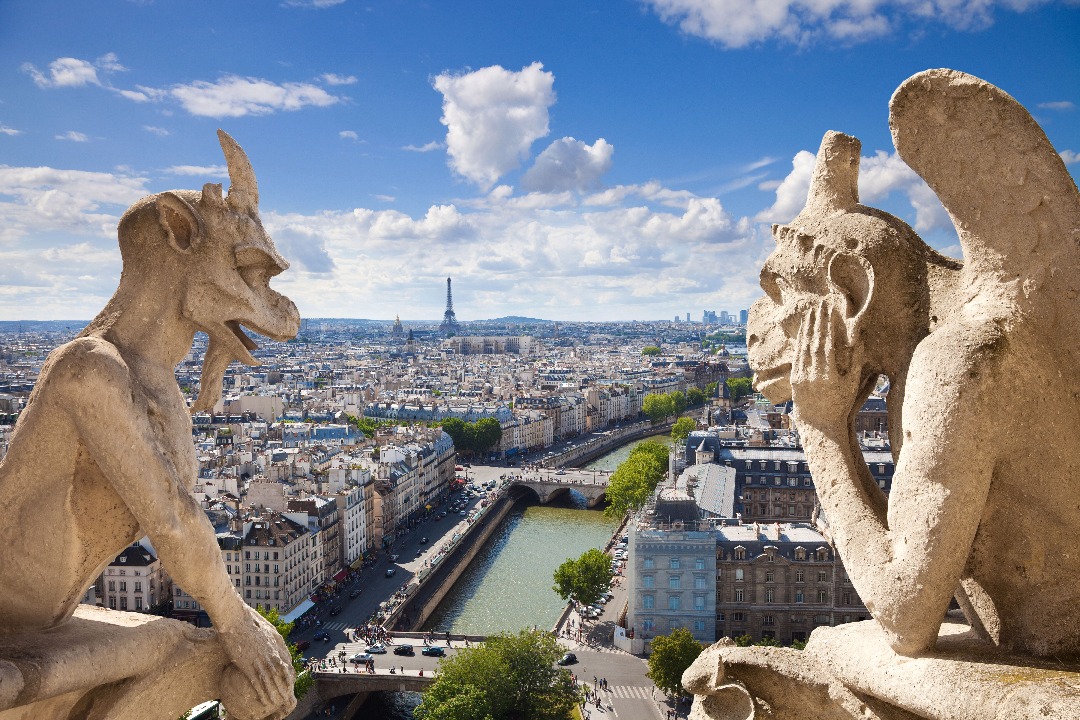 Image courtesy of France Channel, “Notre Dame de Paris” (2016)
Image courtesy of France Channel, “Notre Dame de Paris” (2016)
Notre-Dame de Paris is known for its flying buttresses and stained-glass windows, but its bells are equally storied. Suspended high in the towers, these massive bronze instruments have tolled for coronations, revolutions, and liberation days. During WWII, they narrowly escaped being melted down for armaments — a little-known story that makes their continued ringing all the more powerful.
The Bells as Voices of Paris
Notre-Dame’s bells have long been considered the “voice of Paris.” The largest, Emmanuel, dates back to the 17th century and weighs over 13 tons. Each bell has a unique tone, and their combined sound is carefully tuned to create harmonious peals that can be heard across the Seine.
WWII: The Bells Almost Lost
During the German occupation of Paris, many church bells across France were requisitioned, melted down, and turned into weapons. Notre-Dame’s bells were on the list — but a combination of bureaucracy, reverence for the cathedral, and perhaps the chaos of war kept them safe. When Paris was liberated in August 1944, the bells of Notre-Dame rang out for hours, announcing freedom to the city and becoming one of the most emotional soundscapes in French history.
Jeanne, 92, recalls: “I was a teenager then. When the bells rang that day, the whole neighborhood poured into the streets. People cried, embraced strangers — it felt like Paris was breathing again.”
A Tradition of Naming
Unlike ordinary objects, Notre-Dame’s bells are named, almost as if they were family members:
-
Emmanuel – The great bourdon, considered the most beautiful-sounding bell in Europe
-
Marie – The second largest, named for the Virgin Mary
-
Gabriel, Anne-Geneviève, Denis, Marcel, Étienne – Each named for saints and historical figures, creating a kind of spiritual genealogy
These names are ceremoniously given at a baptism of the bells, a tradition that includes anointing them with holy oil and blessing them before they ring for the first time.
Restoration and Resonance
After centuries of use, several bells were replaced in 2013 to restore the cathedral’s original 18th-century sound profile. Today, high-tech monitoring systems keep them in tune and prevent cracks, ensuring that their voices will continue for generations.
Henri, a lifelong Parisian: “I hear them from my apartment on the Left Bank. When they ring at Easter or Christmas, it is like the city is speaking directly to you — solemn but comforting.”
The Bells After the 2019 Fire
When Notre-Dame was devastated by fire in April 2019, Parisians feared for the bells. Their survival became a symbol of hope. In the days following, when they rang again for the first time, crowds gathered silently on the bridges of the Seine.
Claire, 37, remembers: “After the fire, hearing Emmanuel’s voice felt like a promise — that Notre-Dame, and Paris, would rise again.”
Why They Matter
Notre-Dame’s bells are not just instruments — they are timekeepers, storytellers, and witnesses. Their survival through war and disaster has made them symbols of endurance. When they ring, they do more than mark the hour: they remind Parisians that the city, like its cathedral, endures.